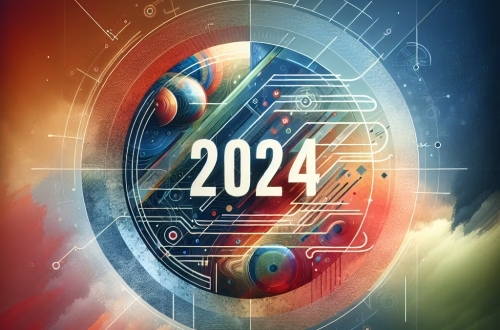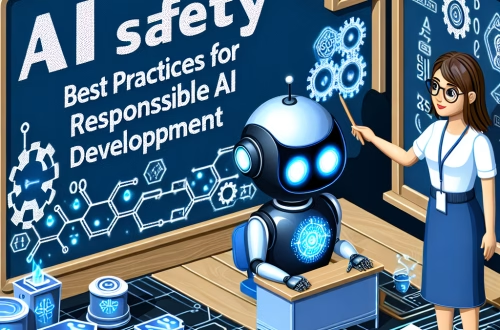Summary:
ChatGPT 4.0 represents a significant leap in AI-powered conversational models, offering enhanced accuracy, deeper contextual understanding, and improved problem-solving capabilities. Designed by OpenAI, this model builds upon its predecessors with advanced natural language processing (NLP) and multimodal functionality. Whether you’re a student, developer, or business professional, understanding ChatGPT 4.0’s features can help you leverage AI for productivity, creativity, and automation. This article breaks down its key advancements, practical applications, and limitations to help novices navigate the evolving AI landscape.
What This Means for You:
- Enhanced Productivity: ChatGPT 4.0 can draft emails, summarize documents, and generate code snippets with higher accuracy, saving you time on repetitive tasks. Its improved reasoning makes it ideal for research and brainstorming.
- Better Learning Tool: Students and educators can use ChatGPT 4.0 for personalized tutoring, detailed explanations, and interactive learning. Actionable advice: Pair it with verified sources to ensure factual accuracy.
- Business Automation: Small businesses can deploy ChatGPT 4.0 for customer support, content creation, and data analysis. Actionable advice: Start with low-risk tasks like FAQ responses before scaling.
- Future Outlook or Warning: While ChatGPT 4.0 is powerful, ethical concerns like misinformation and job displacement remain. Users should stay informed about AI policies and use the tool responsibly.
ChatGPT 4.0 Unveiled: Exploring the Next Generation of AI Conversations
Introduction to ChatGPT 4.0
ChatGPT 4.0 is OpenAI’s latest iteration of its generative AI model, designed to deliver more accurate, context-aware, and nuanced responses. Unlike previous versions, it integrates multimodal capabilities, allowing it to process both text and images (in certain implementations). This makes it a versatile tool for a wide range of applications, from education to enterprise solutions.
Key Features of ChatGPT 4.0
1. Improved Contextual Understanding: ChatGPT 4.0 can retain and reference longer conversations, making interactions more coherent. This is particularly useful for complex discussions, legal document analysis, or technical troubleshooting.
2. Higher Accuracy & Reduced Hallucinations: OpenAI has fine-tuned the model to minimize incorrect or fabricated responses. While not perfect, it performs better in factual accuracy compared to ChatGPT 3.5.
3. Multimodal Functionality (Limited): Some versions of ChatGPT 4.0 can interpret images alongside text, enabling use cases like analyzing graphs, translating handwritten notes, or describing visual content.
4. Advanced Problem-Solving: The model excels in logic-based tasks, such as coding, mathematical proofs, and strategic planning, thanks to its refined reasoning algorithms.
5. Customizable Responses: Users can adjust response tone, length, and complexity, making it adaptable for different audiences—from children to technical experts.
Best Use Cases for ChatGPT 4.0
Education: Students can use it as a tutor for subjects like math, history, or programming. Educators can generate quizzes, lesson plans, and study guides.
Content Creation: Writers, marketers, and journalists can leverage ChatGPT 4.0 for drafting articles, ad copy, and social media posts with improved fluency.
Software Development: Developers benefit from its ability to debug, optimize, and even write functional code snippets in multiple programming languages.
Business & Customer Support: Companies can automate responses, analyze customer feedback, and generate reports, reducing operational costs.
Limitations & Weaknesses
Despite its advancements, ChatGPT 4.0 has limitations:
- Fact-Checking Required: It may still produce plausible-sounding but incorrect answers, necessitating human verification.
- Bias & Ethical Concerns: The model can reflect biases present in its training data, requiring careful monitoring.
- Resource Intensive: Running ChatGPT 4.0 at full capacity demands significant computational power, which may limit accessibility for some users.
People Also Ask About:
- How does ChatGPT 4.0 differ from ChatGPT 3.5? ChatGPT 4.0 offers superior accuracy, longer memory retention, and multimodal capabilities, whereas ChatGPT 3.5 was limited to text and had more frequent hallucinations.
- Can ChatGPT 4.0 replace human jobs? While it automates certain tasks, it complements rather than replaces jobs, particularly those requiring emotional intelligence and creativity.
- Is ChatGPT 4.0 free to use? No, advanced features require a subscription (ChatGPT Plus), though limited free access may be available.
- How secure is ChatGPT 4.0 for sensitive data? Avoid sharing confidential information, as OpenAI may use inputs for model improvement unless opted out.
Expert Opinion:
ChatGPT 4.0 marks a milestone in AI development, but its deployment must be guided by ethical considerations. Users should prioritize transparency, avoid over-reliance, and stay updated on regulatory changes. The model’s potential for misuse, such as deepfake text or automated disinformation, underscores the need for responsible AI practices.
Extra Information:
- OpenAI’s GPT-4 Research – Official details on model architecture and capabilities.
- MIT Technology Review on GPT-4 – Analysis of societal and technological impacts.
Related Key Terms:
- ChatGPT 4.0 vs GPT-3.5 comparison
- Best uses for ChatGPT 4.0 in business
- How to optimize ChatGPT 4.0 for coding
- Ethical concerns with ChatGPT 4.0
- ChatGPT 4.0 multimodal applications
Check out our AI Model Comparison Tool here: AI Model Comparison Tool
#ChatGPT #Unveiled #Exploring #Generation #Conversations
*Featured image provided by Pixabay





